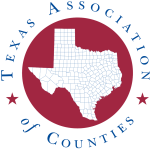Publications
Facts About Texans and Their County Governments
- Texas has 254 counties, more than any other U.S. state. Here are shortcuts to their websites.
- Here's a good place to get basic information about a Texas county.
- This site has a downloadable database to compare and rank counties by size, population, tax rates, income levels and other characteristics.
- The county judge represents the county in many administrative functions. The county judge presides over the Commissioners Court, which includes four elected commissioners, each representing a precinct. Most county judges have broad judicial duties, such as presiding over misdemeanor criminal and small civil cases, probate matters and appeals from the Justice of the Peace Court.
- Texas counties are rooted in Spanish law and Texas history. Under Spanish and Mexican rule, Texas was divided into municipalities (municipios in Spanish). When the Republic of Texas gained independence in 1836, the 23 municipalities became the first Texas counties. Many of these were very large and were later divided into new counties.
- Of the state's 29 million people, 7.6 million (1 in 4) live outside of incorporated cities and rely on counties for basic services such as law enforcement and emergency medical services.
- Counties are funded by sales taxes, property taxes and fees such as court filing fees, criminal fines and road and bridge fees. Together, 10 of the largest Texas counties spent $9.4 billion in Fiscal Year 2020 delivering services to Texans.
- In Texas, all county elections are by party, with the exception of the Dallas County Department of Education Board of Trustees.
- Twelve types of public officials compose county government.
- By population, the largest county is Harris, with 4,602,523 residents. The smallest is Loving, with just over 130 residents. The largest in size, the Big Bend’s Brewster County, is 6,193 square miles, more than 40 times the size of the smallest, Rockwall, at 149 square miles.

